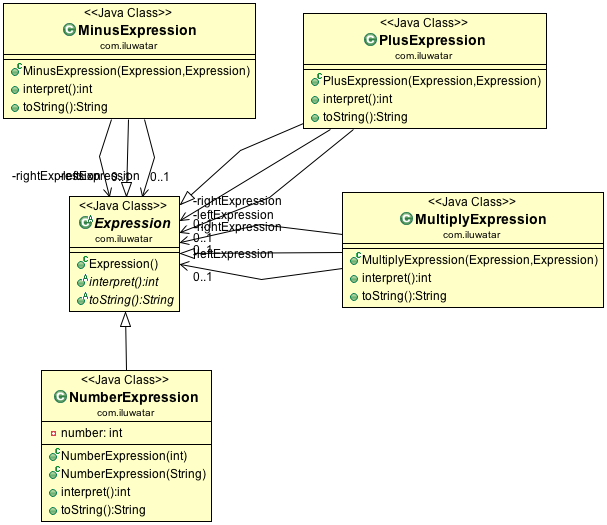* Moves game-loop to Java 11 * Moves guarded-suspension to Java 11 * Moves half-sync-half-async to Java 11 * Moves hexagonal to Java 11 * Moves intercepting-filter to Java 11 * Moves interpreter to Java 11 * Moves iterator to Java 11
layout, title, folder, permalink, categories, tags
| layout | title | folder | permalink | categories | tags | |
|---|---|---|---|---|---|---|
| pattern | Interpreter | interpreter | /patterns/interpreter/ | Behavioral |
|
Intent
Given a language, define a representation for its grammar along with an interpreter that uses the representation to interpret sentences in the language.
Class diagram
Applicability
Use the Interpreter pattern when there is a language to interpret, and you can represent statements in the language as abstract syntax trees. The Interpreter pattern works best when
- the grammar is simple. For complex grammars, the class hierarchy for the grammar becomes large and unmanageable. Tools such as parser generators are a better alternative in such cases. They can interpret expressions without building abstract syntax trees, which can save space and possibly time
- efficiency is not a critical concern. The most efficient interpreters are usually not implemented by interpreting parse trees directly but by first translating them into another form. For example, regular expressions are often transformed into state machines. But even then, the translator can be implemented by the Interpreter pattern, so the pattern is still applicable
Real world examples
- java.util.Pattern
- java.text.Normalizer
- All subclasses of java.text.Format
- javax.el.ELResolver
